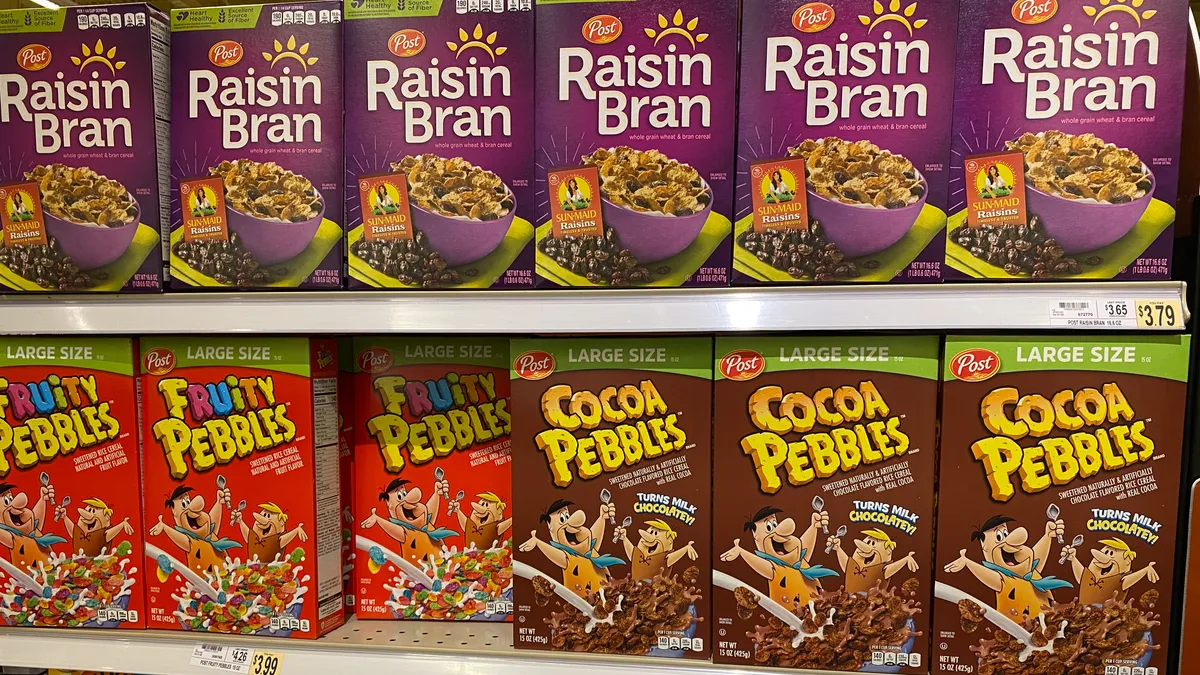At a Vietnamese restaurant a year ago, Polly Mitchell-Guthrie reached for a bottle of sriracha on the table and was surprised when the usual slow pour came out quickly.
Mitchell-Guthrie, a supply chain expert, asked the waiter what happened to the usual bottle with the rooster on it, and soon a complex backstory for why the copycat sauce was on the table became clear.
In a LinkedIn post, Mitchell-Guthrie, vice president of industry outreach and thought leadership at Kinaxis, highlighted the urgency of climate change with the disappearance of the sauce from store shelves and restaurant tables.
“In a vicious cycle, supply chains are the biggest contributor of a company's emissions (in most cases 80-95%) and will also suffer from the resulting disruptions climate change causes,” she wrote. “#sustainablesupplychains are no longer a nice-to-have but a must-have, just like sriracha in pho.”
On April 30, Huy Fong notified wholesalers that it would again halt sauce production until after Labor Day due to supply issues. In April 2020, Huy Fong had also announced its first halt of production, citing low stock issues. In April 2022, the company announced another halt that would not resume until after Labor Day. And now, the company finds itself in the same place again.
The recent letter, obtained by sister publication Food Dive from Jungle Jim's International Grocery, pointed to the chili supply being “too green to proceed with production.” It read in part: “After reevaluating our supply of chili, we have determined that it is too green to proceed with production as it is affecting the color of the product.”
The New York Times reported that “Craig Underwood, a California farmer who grew red jalapeños for Huy Fong Foods for nearly three decades and is now a competing manufacturer, said the chiles were likely picked too late in the season.”
He explained: “The jalapeños start out green, then mature to a chocolate color and are picked when they turn red.”
“Nobody wants a puke-colored hot sauce, and other chili experts I’m reading are saying it will impact the flavor…taste matters,” Mitchell-Guthrie said.
But it isn’t the popular hot sauce’s first experience with this and some experts say it’s more complicated than just supply issues.
“Peppers are a pretty labor-intensive crop — it's really important for growers to compete with, with our labor shortages and the increasing expense of labor,” Walker said. “We really need to invest in research and development to have new varieties and new techniques to grow peppers so we can continue to keep our pantries filled with hot sauce.”
Huy Fong Foods is the most well-known and major manufacturer in the U.S. sriracha market, with only three products — sriracha, sambal and chili garlic sauce.
Yet even at its size, the shortage demonstrates how Huy Fong failed to adequately diversify its sourcing partners, David Ortega, associate professor of food, agriculture and resource economics at Michigan State University told Manufacturing Dive back in 2023.
“These are seasonal products; you can’t just switch suppliers from one day to the next,” Ortega said. While the core culprit may have been climate change, he said, the fact that other hot sauce suppliers didn’t experience the same shortage meant that there was more to this story.
Struggling to source jalapenos since 2020
Although production has picked up in recent months, another shortage may be on the horizon as farmers grin and bear severe drought in Mexico, where Huy Fong sources its red winter pepper jalapeños.
USA Today reported that the company has since purchased peppers from other growers in New Mexico, Mexico, and California, but struggled with the shortage. Also, public lawsuits have caused some farmers to avoid the company. Currently, the company uses pepper suppliers in Mexico, some reports say.
Huy Fong did not respond to a request for comment from sister publication Food Dive.
“You need to have the Goldilocks right number of suppliers — you can’t have too few. You also can’t have too many,” Mitchell-Guthrie added.
This is an illustration of the importance of supply chain, Mitchell-Guthrie added. “You come up with a great product, you make an amazing brand — that’s the start. But supply chain is an overlooked angle here, on how important it is,.”
The impact on the industry
Is one sauce’s shortage really a big deal?
“Yes, actually, it is a huge problem,” says Stephen Dombroski, director of consumer markets at QAD, an international supply chain company.
Consumers, who have to alter food plans and may experience sticker shock from increased prices, are the real casualties here, Dombroski added.
“As peppers impact the fresh, frozen and additive manufacturing markets, the ripple effects could be huge. It can change demand and the ability for manufacturers to produce other products,” Dombroski said. “It can influence not just short-term consumer buying habits but long term causing changes in the market of not just peppers but other agricultural alternatives.”
While Huy Fong struggles, other sriracha brands are vying to fill its void. But loyal Huy-Fong fans, and food producers who depend on the product, are destined to wait out the tumultuous times.
“People just really love it. They love the flavor and [the company] came across the right formula,” Dr. Stephanie Walker, co-director of the Chile Pepper Institute at New Mexico State University said, adding that the price is right. “But there are many other hot sauces out there.”
A spicy falling out in Los Angeles
In 1979, the Huy Fong company’s founder David Tran, a Vietnamese refugee, immigrated to Los Angeles where he started the globally renowned brand out of the back of his blue Chevy van. Just under a decade later, the company began its partnership with Underwood Ranches, a California-based farm. It was their sole supplier of jalapeños.
Business was booming until 2016-2017 when Huy Fong and Underwood Ranch had a heated financial disagreement. The Los Angeles Times reported that “Historically, Huy Fong would prepay Underwood Ranches for the estimated costs associated with growing and harvesting the chiles. The agreement was ‘partly oral, partly written and partly established by the parties’ practice,’ court records show.”
In 2019, a jury found the sauce brand had breached its contract with Underwood Ranches, committed fraud, and was ordered to pay $23.3 million, the LA Times reported.
“Basically with personalities, they had a big breakdown, and lost their long-term relationship with that supplier,” Walker said.
Now, Huy Fong is paying the price of stiff competition for products — including, ironically, a line of competing hot sauces developed by none other than Underwood Ranches themselves.



















